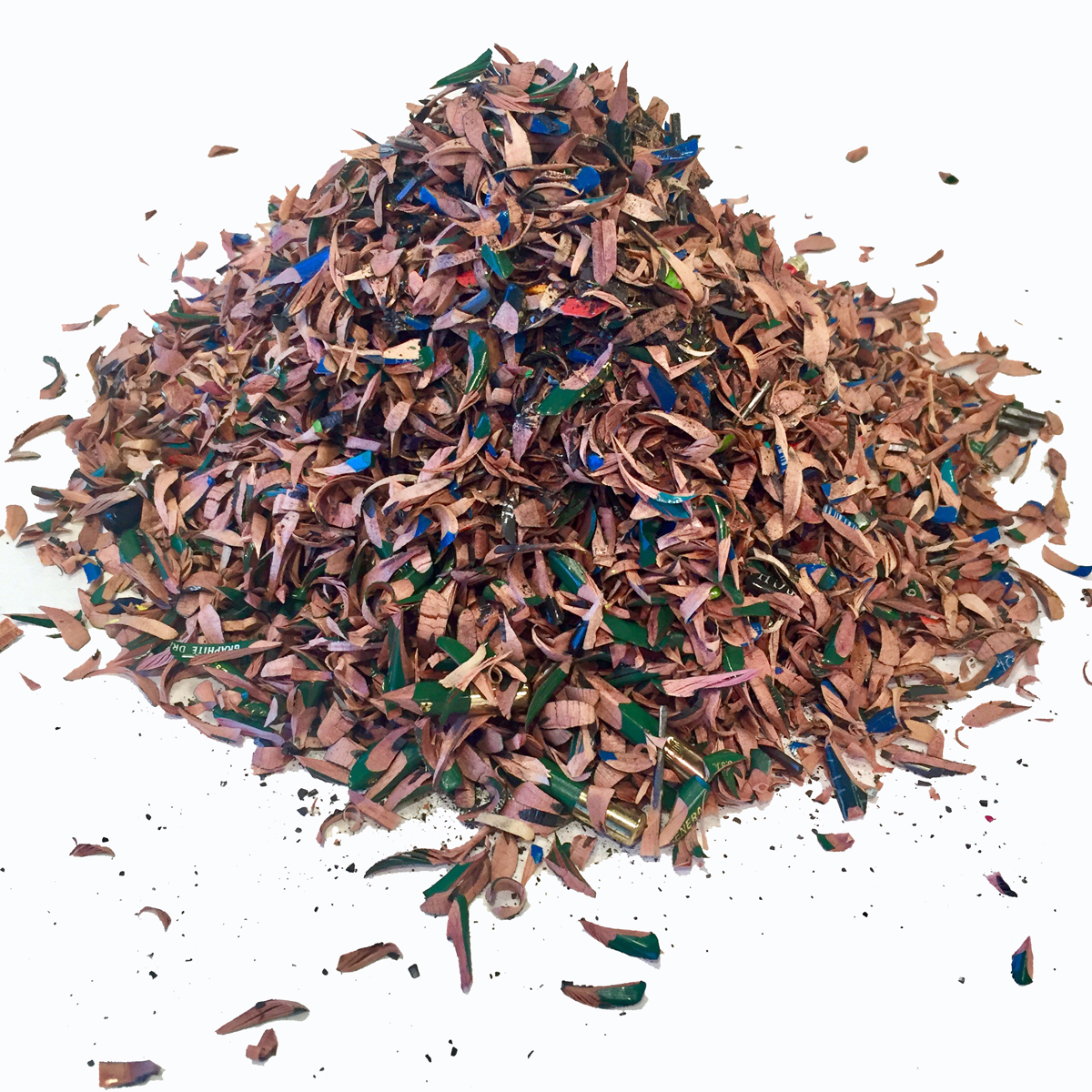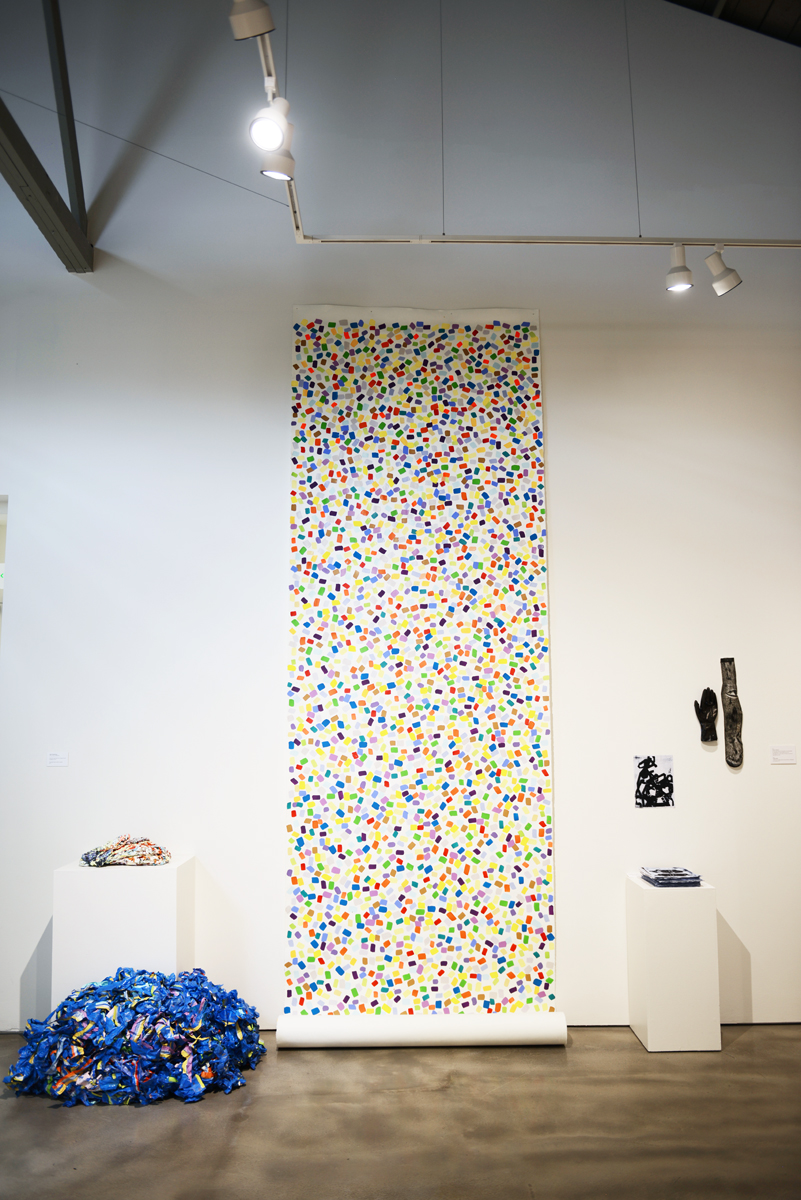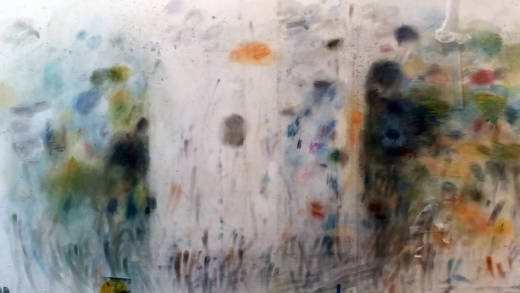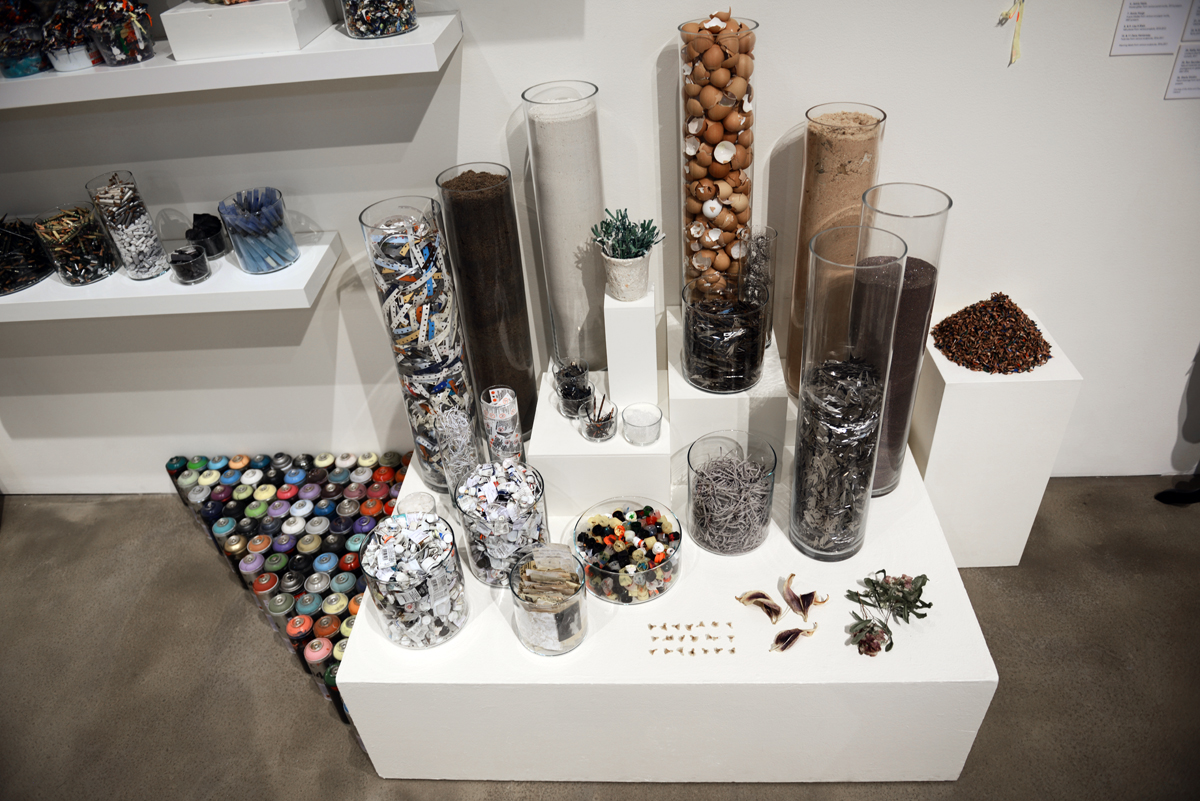It’s a group exhibition of Bay Area artists with a twist: instead of showing artworks, Detritus displays the byproducts of making. By “byproducts,” I mean objects that might, in some cases, be considered trash — or archival materials worth saving. To the artists of Detritus, on view at the San Jose Institute of Contemporary Art (ICA) through Sept. 10, the latter is a safe bet.
With byproducts from more than 100 Bay Area artists, Detritus represents a hefty survey of regional creatives from multiple career levels. The exhibition shows a substantial commitment to diversity of medium, though the abstract expression-ish paint splatterings get extra attention in a digital slideshow of studio floors.

The art-making leftovers range from amassed pencil shavings to foam-core prototypes, from blooper reels to stacked notebooks, all presented in varying degrees of aestheticized display. However, when surveying the gallery for the first time, it’s not necessarily obvious that this is an exhibition of not-art.
Detritus could easily pass for a contemporary group show. This ambiguity is partially because art audiences are used to blurring the lines between everyday objects and art. Who hasn’t seen a stack of folded clothes placed on a pedestal (courtesy of Surabhi Saraf) or a pile of lightbulbs on the floor (from Jim Campbell) in an art institution before?

The other reason Detritus reads like artwork is because the installation displays its objects like works of art. They benefit from institutional presentation: good lighting, white walls, careful display and labels.




